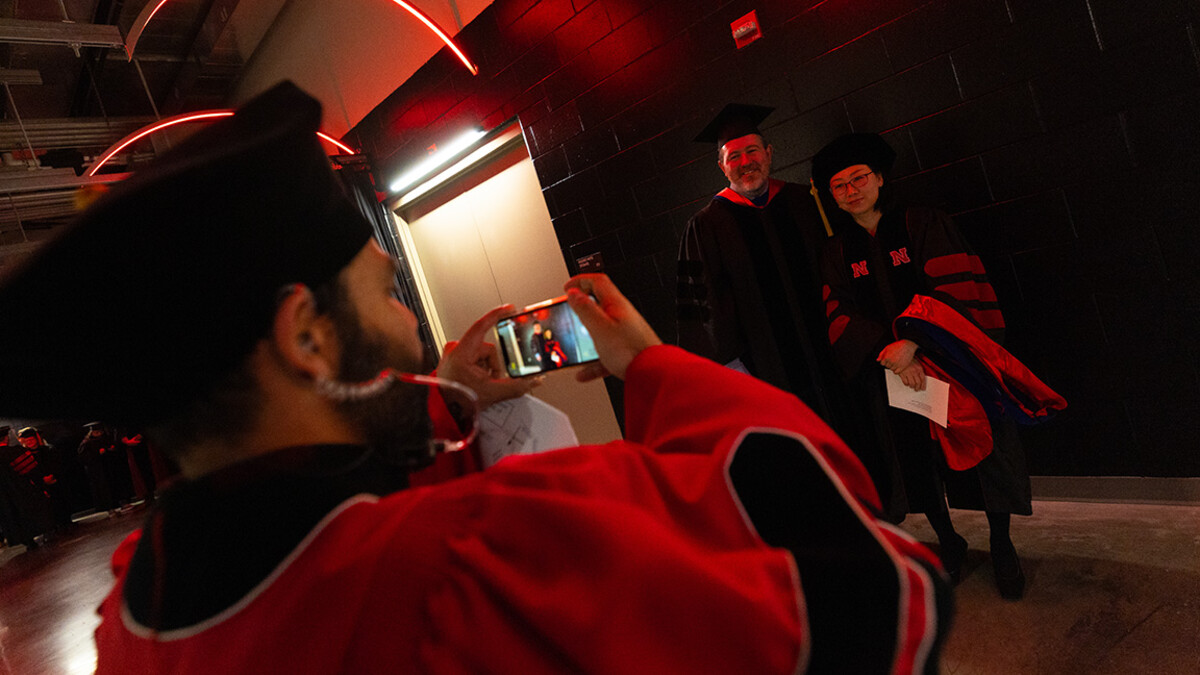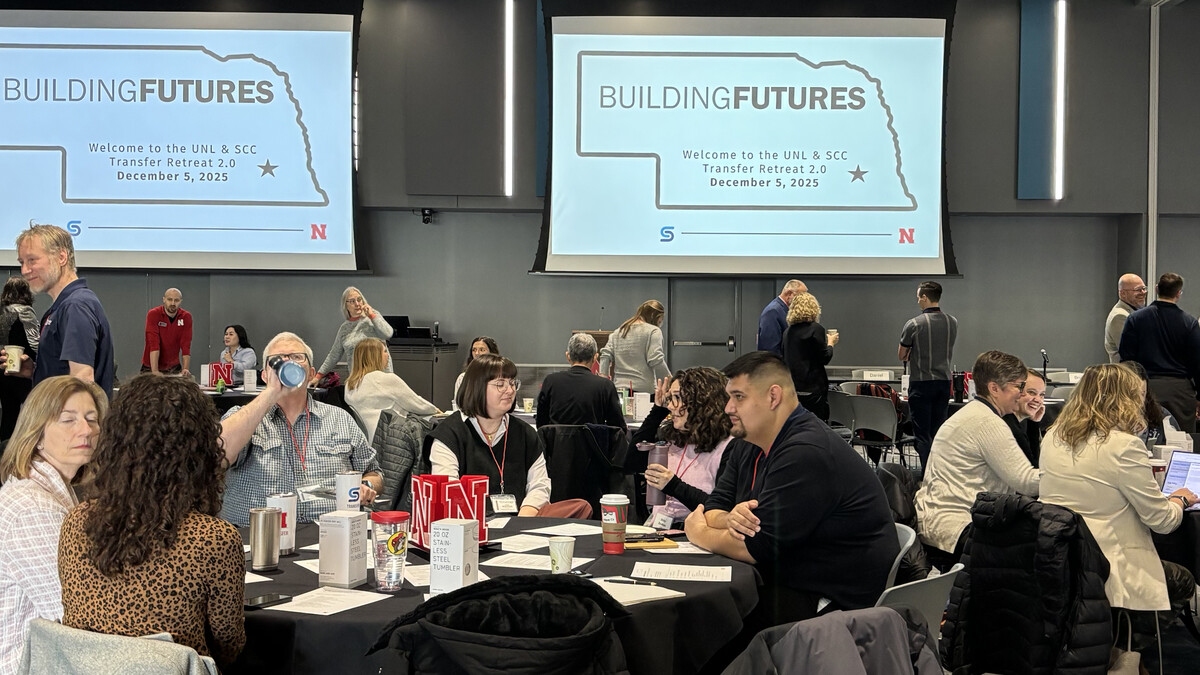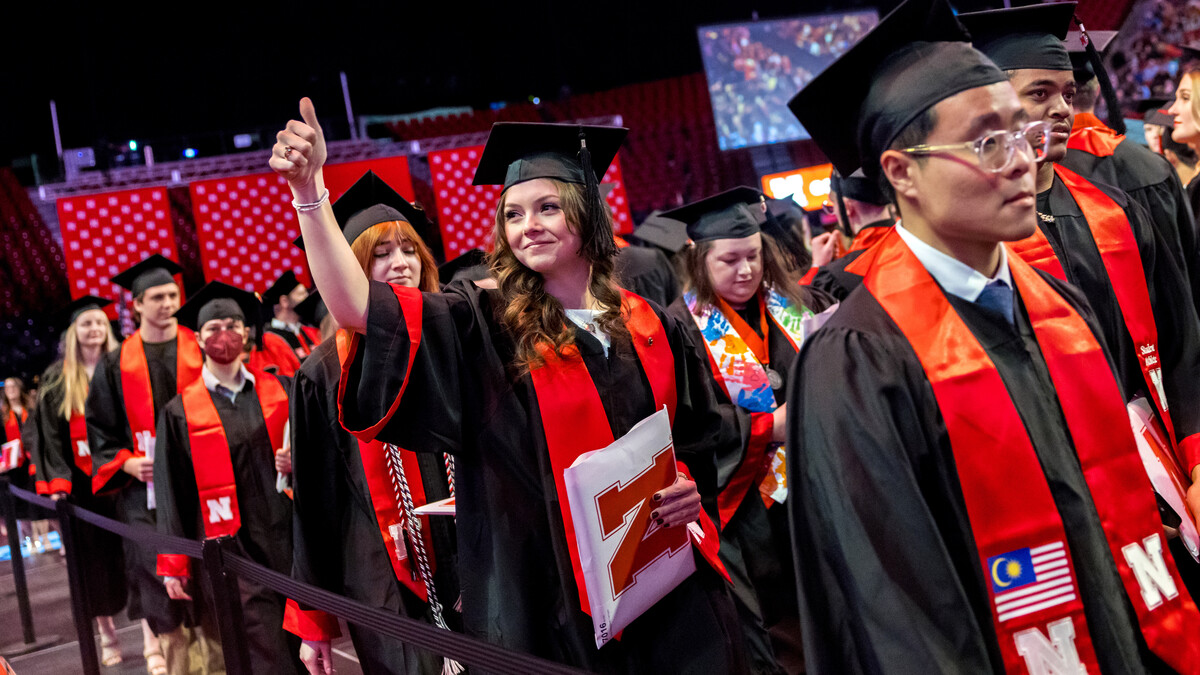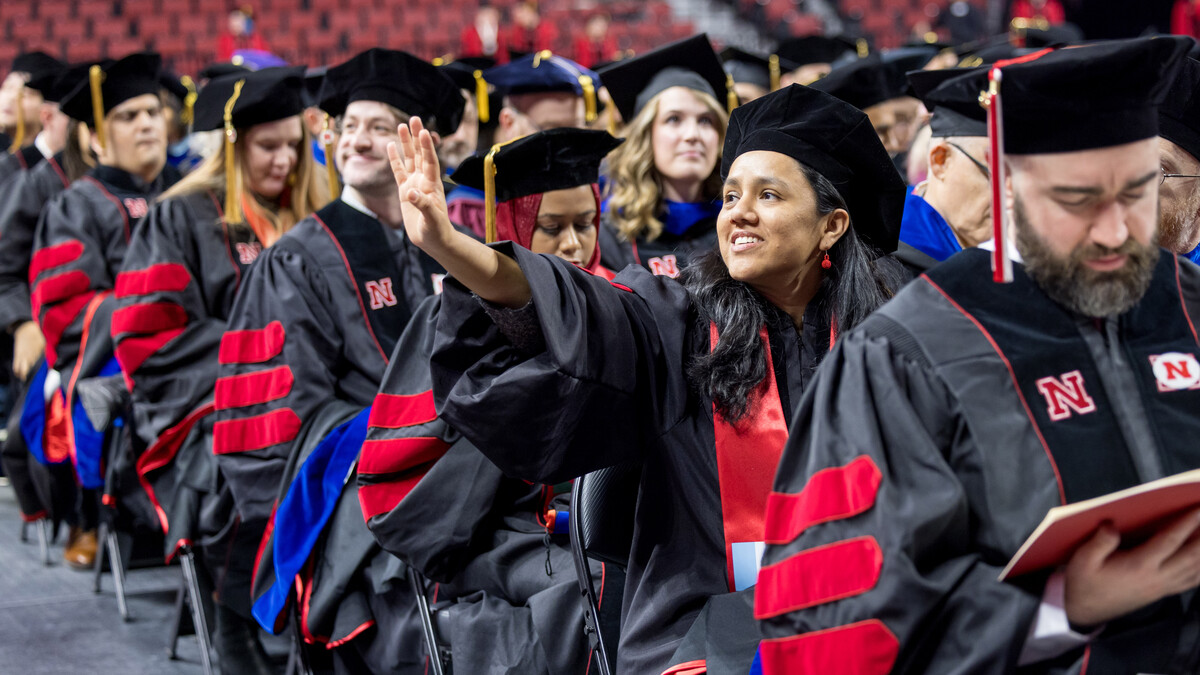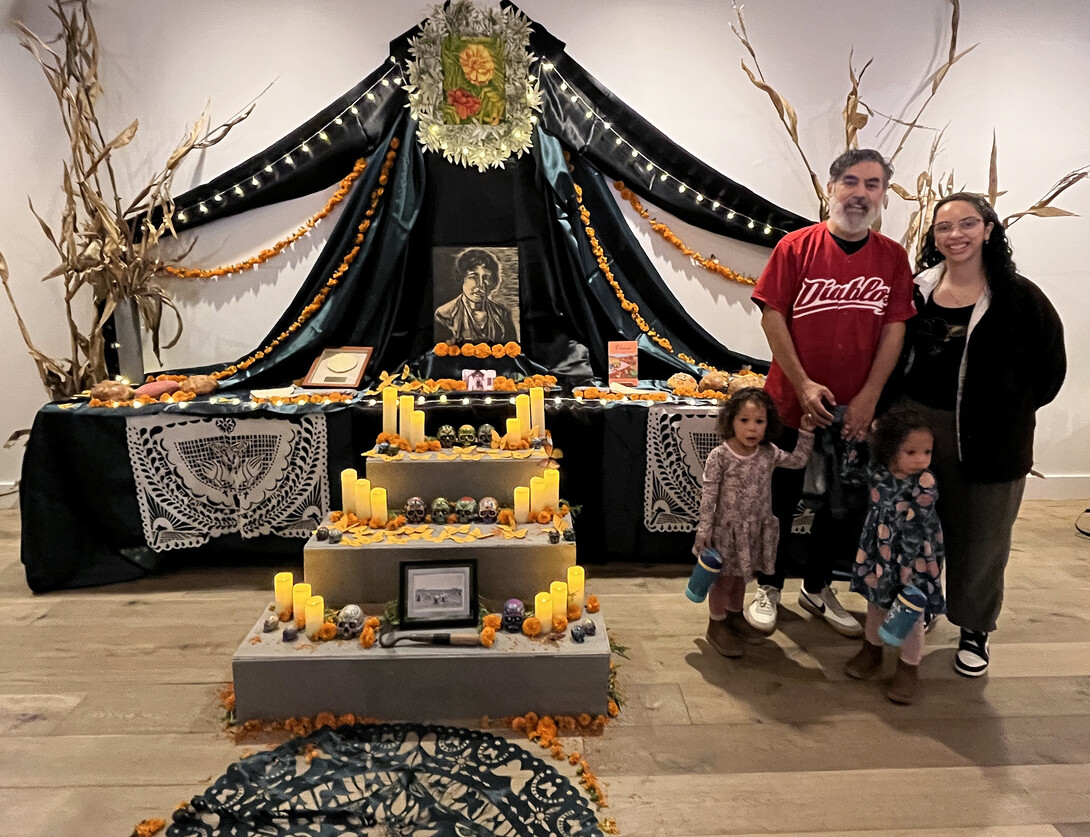
Angelica Tapia, a graduate student in the University of Nebraska–Lincoln's School of Art, Art History and Design, was one of three artists nationally to participate in the Smithsonian’s National Museum of the American Latino Día de los Muertos installation.
“It was so much fun. It was my first time going to D.C.," said Tapia, who is from Lexington, Nebraska. "When I graduated from high school, my mom made the comment, ‘You’re going to go to Washington one day.’ And I was surprised by the comment, why would you say that? Such an odd thing to say. Seeing that comment come to fruition in this surprising way, when the opportunity came about, I had to do it.”
She was initially contacted by Ana Diaz-Orozco, a community engagement coordinator at the University of Nebraska at Omaha's Office of Latino/Latin American Studies, who coordinated a previous exhibition that Tapia exhibited in.
“Ana reached out to me saying someone wanted to talk to me about possibly doing the altar for Día de los Muertos, or Day of the Dead, from the Smithsonian,” Tapia said. “And I was like, absolutely! Get me connected, and that’s how I initially started into it.”
The museum started exhibiting work in 2022 after a 2020 act of Congress made way for its creation. It is currently raising funds for its own building, so the exhibition was held at La Cosecha, a Latin American marketplace in Washington, D.C.
Aaron Holz, professor of art, said he was excited about Tapia's participation in the installation.
"It is wonderful to have Angelica represent her artwork, Latin culture and UNL," Holz said, "Angelica works across a variety of media, including sculpture, printmaking, painting, and collage, and the altar piece she created for this interactive exhibition employs all her interests and skill sets. This opportunity gave Angelica a chance to challenge space at a large scale, and I hope that she finds takeaways as she prepares for her MFA Thesis Exhibition this spring."
Joshua Segovia, the public programs coordinator for the museum, asked Tapia to come up with a proposal for an altar and research names to honor from Nebraska, preferably Latino Nebraskans. Tapia then reached out to multiple professors, including UNO's Thomas Sanchez, associate professor of sociology, and UNL's Laura Muñoz, associate professor of ethnic studies, for references.
Tapia honored the life of Elvira C. Hernandez (1902-2012), whose life embodied resilience and the strength of the immigrant experience.
Born in Chalchihuites, Zacatecas, Mexico, in 1909, Hernandez immigrated to the United States at the age of 6, living in Kansas City, Kansas, and El Paso, Texas, before settling in Scottsbluff, Nebraska, at age 10 in 1920. Beginning at the age of 11, she worked full time in the sugar beet, potato and other crop fields, alongside her family. She also made tortillas for her family. She and her husband, Michael, tended their own farm between 1950-1965.
After her husband’s death in 1965, Hernandez dedicated her life to community service and advocated for migrant farm workers, aiding in citizenship applications and exposing labor abuses. She opened a women’s senior center to provide fund-raising activities and out-of-town trips, and was a familiar presence in nursing homes and hospitals, regularly visiting to comfort the sick and elderly. Hernandez still cooked tortillas for. her family and calculated that she rolled out more than one million tortillas throughout her life.
“One of the things we included in the altar was her family framed her one millionth tortilla that she made, and so that was part of the altar,” Tapia said. “And then we also had the short hoe that she used for over 50 years farming.”
Tapia said she hopes the history of more Nebraska Latinos can be appreciated in the future, and she may do more work to preserve it after school.
“There are legacies of really interesting Nebraska Latinos, and I think that needs to be documented more,” Tapia said. “This experience just made me realize the importance of it a lot more. I started more research of different names, and I wondered why aren’t they written down somewhere? Why don’t we have a little booklet or pamphlet on these people?"
